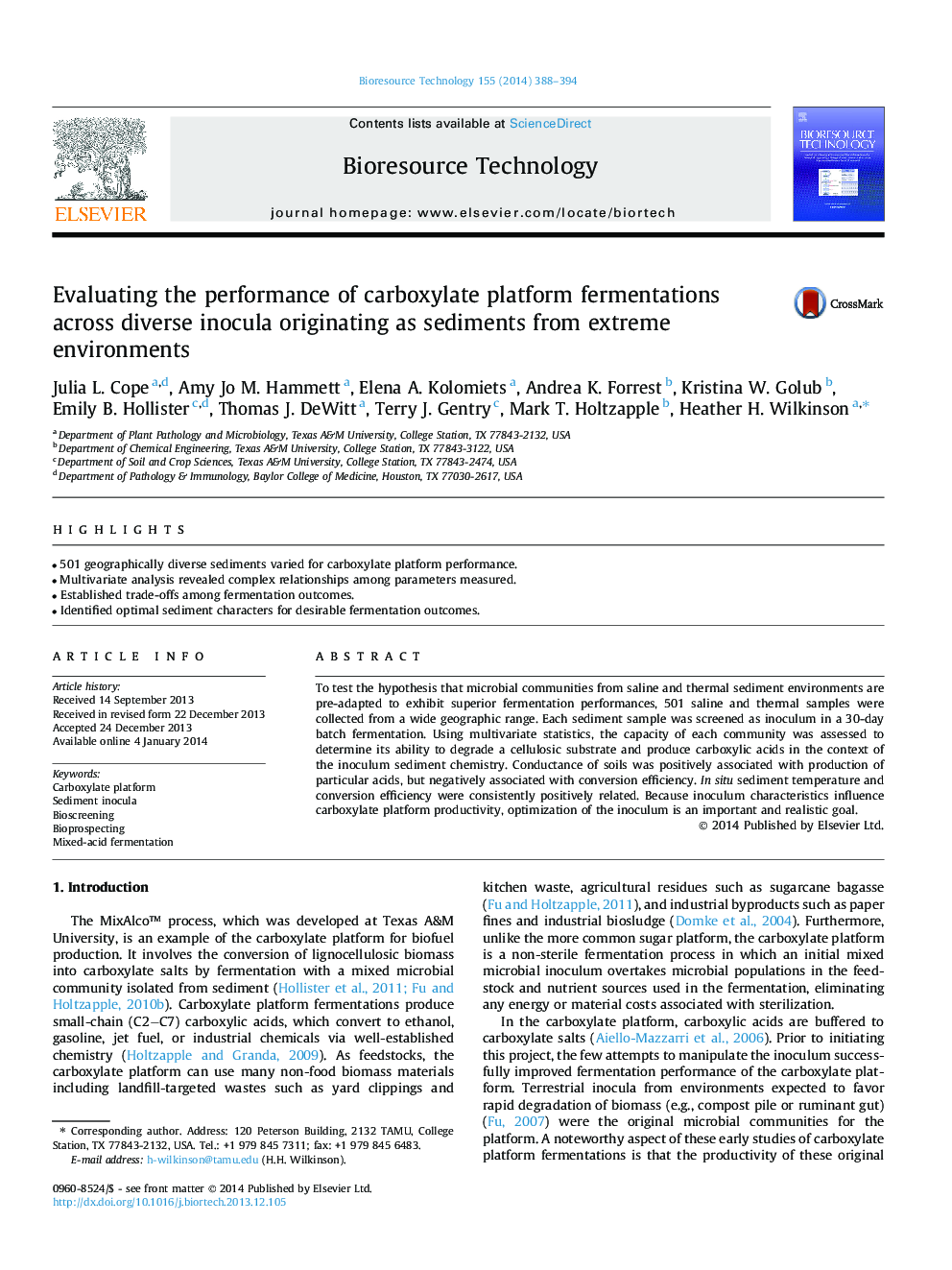| Article ID | Journal | Published Year | Pages | File Type |
|---|---|---|---|---|
| 680988 | Bioresource Technology | 2014 | 7 Pages |
•501 geographically diverse sediments varied for carboxylate platform performance.•Multivariate analysis revealed complex relationships among parameters measured.•Established trade-offs among fermentation outcomes.•Identified optimal sediment characters for desirable fermentation outcomes.
To test the hypothesis that microbial communities from saline and thermal sediment environments are pre-adapted to exhibit superior fermentation performances, 501 saline and thermal samples were collected from a wide geographic range. Each sediment sample was screened as inoculum in a 30-day batch fermentation. Using multivariate statistics, the capacity of each community was assessed to determine its ability to degrade a cellulosic substrate and produce carboxylic acids in the context of the inoculum sediment chemistry. Conductance of soils was positively associated with production of particular acids, but negatively associated with conversion efficiency. In situ sediment temperature and conversion efficiency were consistently positively related. Because inoculum characteristics influence carboxylate platform productivity, optimization of the inoculum is an important and realistic goal.
